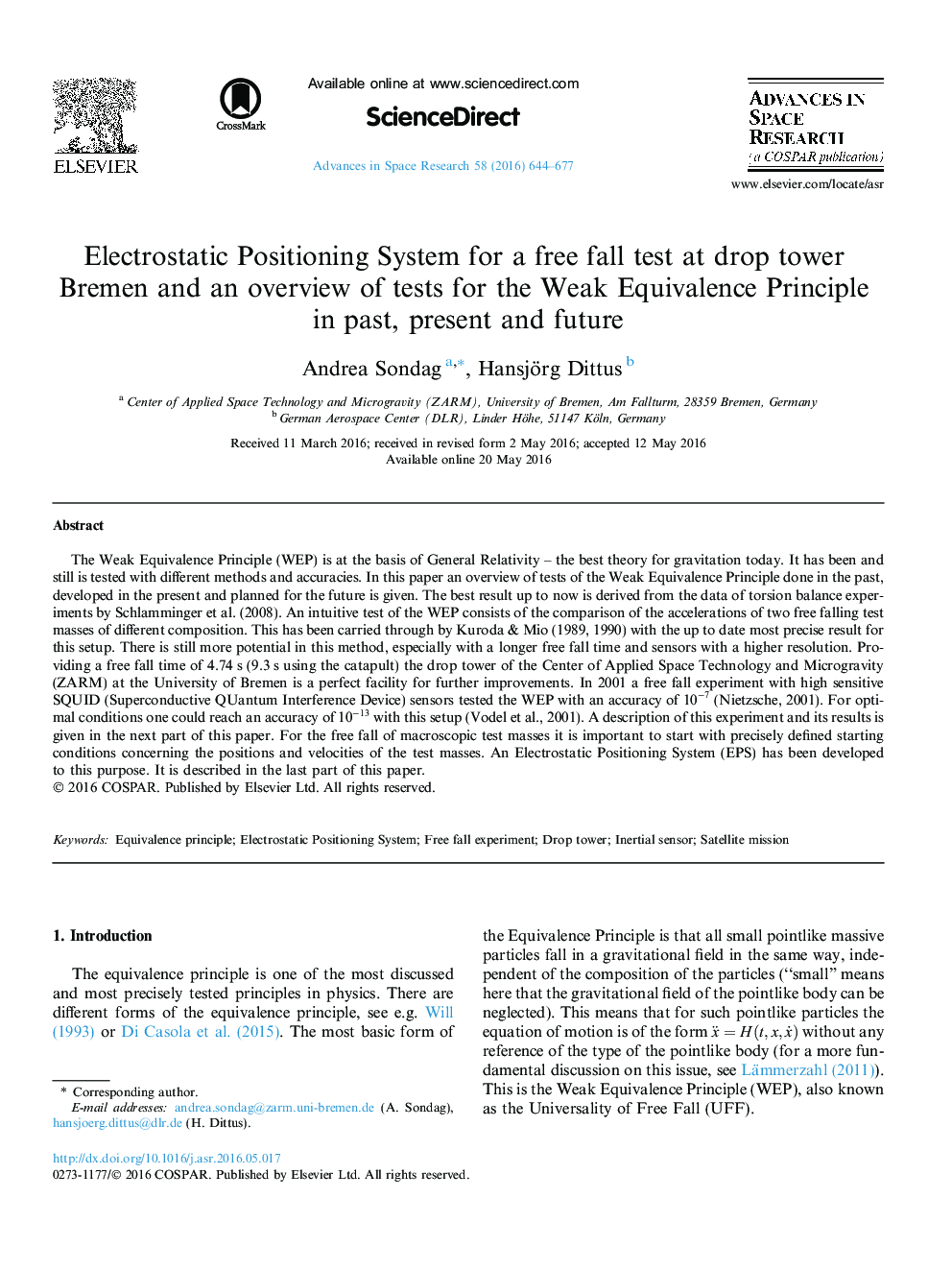| Article ID | Journal | Published Year | Pages | File Type |
|---|---|---|---|---|
| 1763275 | Advances in Space Research | 2016 | 34 Pages |
The Weak Equivalence Principle (WEP) is at the basis of General Relativity – the best theory for gravitation today. It has been and still is tested with different methods and accuracies. In this paper an overview of tests of the Weak Equivalence Principle done in the past, developed in the present and planned for the future is given. The best result up to now is derived from the data of torsion balance experiments by Schlamminger et al. (2008). An intuitive test of the WEP consists of the comparison of the accelerations of two free falling test masses of different composition. This has been carried through by Kuroda & Mio (1989, 1990) with the up to date most precise result for this setup. There is still more potential in this method, especially with a longer free fall time and sensors with a higher resolution. Providing a free fall time of 4.74 s (9.3 s using the catapult) the drop tower of the Center of Applied Space Technology and Microgravity (ZARM) at the University of Bremen is a perfect facility for further improvements. In 2001 a free fall experiment with high sensitive SQUID (Superconductive QUantum Interference Device) sensors tested the WEP with an accuracy of 10-710-7 (Nietzsche, 2001). For optimal conditions one could reach an accuracy of 10-1310-13 with this setup (Vodel et al., 2001). A description of this experiment and its results is given in the next part of this paper. For the free fall of macroscopic test masses it is important to start with precisely defined starting conditions concerning the positions and velocities of the test masses. An Electrostatic Positioning System (EPS) has been developed to this purpose. It is described in the last part of this paper.
